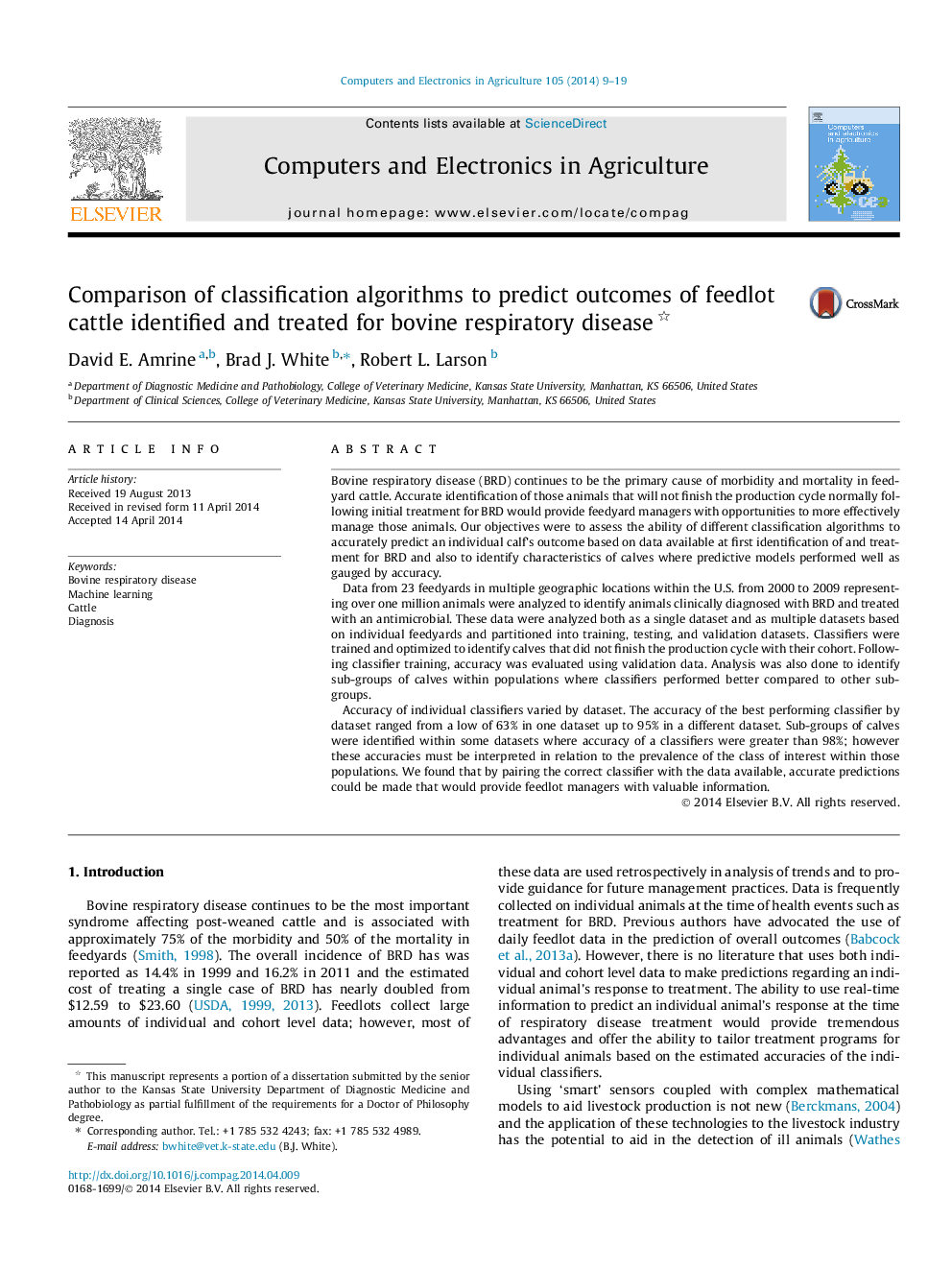| کد مقاله | کد نشریه | سال انتشار | مقاله انگلیسی | نسخه تمام متن |
|---|---|---|---|---|
| 84284 | 158872 | 2014 | 11 صفحه PDF | دانلود رایگان |
• We evaluated the ability of classifiers to predict outcomes following bovine respiratory disease diagnosis in cattle.
• Cattle not finishing the feeding phase normally (mortality or culling) were rare and we used data balancing techniques.
• Accuracy varied by classifier and dataset.
• Classifiers performed well in sub-groups of cattle populations.
• Important to pair the correct classifier with data available.
Bovine respiratory disease (BRD) continues to be the primary cause of morbidity and mortality in feedyard cattle. Accurate identification of those animals that will not finish the production cycle normally following initial treatment for BRD would provide feedyard managers with opportunities to more effectively manage those animals. Our objectives were to assess the ability of different classification algorithms to accurately predict an individual calf’s outcome based on data available at first identification of and treatment for BRD and also to identify characteristics of calves where predictive models performed well as gauged by accuracy.Data from 23 feedyards in multiple geographic locations within the U.S. from 2000 to 2009 representing over one million animals were analyzed to identify animals clinically diagnosed with BRD and treated with an antimicrobial. These data were analyzed both as a single dataset and as multiple datasets based on individual feedyards and partitioned into training, testing, and validation datasets. Classifiers were trained and optimized to identify calves that did not finish the production cycle with their cohort. Following classifier training, accuracy was evaluated using validation data. Analysis was also done to identify sub-groups of calves within populations where classifiers performed better compared to other sub-groups.Accuracy of individual classifiers varied by dataset. The accuracy of the best performing classifier by dataset ranged from a low of 63% in one dataset up to 95% in a different dataset. Sub-groups of calves were identified within some datasets where accuracy of a classifiers were greater than 98%; however these accuracies must be interpreted in relation to the prevalence of the class of interest within those populations. We found that by pairing the correct classifier with the data available, accurate predictions could be made that would provide feedlot managers with valuable information.
Journal: Computers and Electronics in Agriculture - Volume 105, July 2014, Pages 9–19
